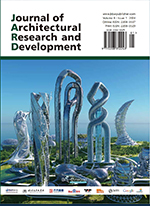Comprehensive Analysis of Indoor Formaldehyde Removal Techniques: Exploring Physical, Chemical, and Biological Methods
Abstract
This research focuses on the evaluation of diverse approaches for removing formaldehyde from indoor environments, which is a significant concern for indoor air quality. The study systematically examines physical, chemical, and biological methods to ascertain their effectiveness in formaldehyde mitigation. Physical methods, including air circulation and adsorption, particularly with activated carbon and molecular sieves, are assessed for their efficiency in various concentration scenarios. Chemical methods, such as photocatalytic oxidation using titanium dioxide and plasma technology, are analyzed for their ability to decompose formaldehyde into non-toxic substances. Additionally, biological methods involving plant purification and microbial transformation are explored for their eco-friendly and sustainable removal capabilities. The paper concludes that while each method has its merits, a combined approach may offer the most effective solution for reducing indoor formaldehyde levels. The study underscores the need for further research to integrate these methods in a practical, cost-effective, and environmentally sustainable manner, highlighting their potential to improve indoor air quality significantly.
References
Lu X, 2020, Analysis of Indoor Formaldehyde Detection and Control Technology. Popular Science & Technology, 22(08): 26–28.
Wang W, Feng X, Li Q, 1999, Occupational Hazards of Formaldehyde Exposure and Its Effects on Olfactory Function. Chinese Public Health, 1999(09): 21–22.
Tang J, Liang X, Long D, et al., 2007, Influence of Pore Structure and Surface Functional Groups of Activated Carbon on Adsorption Performance for Formaldehyde. Carbon Technology, 2007(03): 21–25.
Xiao CF, 2013, Study on the Simulation of Indoor Formaldehyde Diffusion Under Natural Ventilation Conditions. Clean Room and Air Conditioning Technology, 2013(01): 15–18.
Li Y, Wang K, Zhao Q, et al., 2007, Study on the Efficiency of Photocatalytic Reaction of Low Concentration Formaldehyde. Journal of Harbin Institute of Technology, 2007(02): 278–280.
Liang W, Li J, Jin Y, 2011, Photo-Catalytic Degradation of Gaseous Formaldehyde by TiO2/UV, Ag/TiO2/UV, and Ce/TiO2/UV. Building and Environment, 2011(51): 345–350.
Xu M, He M, Wang Y, et al., 2008, Experimental Study on Adsorption-Photocatalytic Degradation of Formaldehyde by TiO_2/ACF Composite Materials. Journal of Safety Science and Technology, 2008(02): 40–44.
Zeng Y, 2015, Preparation, Characterization and Formaldehyde Degradation Study of TiO2 Photocatalyst Loaded on Activated Carbon Fiber, dissertation, Xiangtan University.
Chen H, Liu X, Chen Y, 2016, Experimental Study on the Removal of Formaldehyde by Pulsed Discharge Plasma Synergized with TiO_2/Zeolite. Energy and Environmental Protection, 30(01): 26–29 + 36.
Fan X, Zhu T, Sun Y, et al., 2011, The Roles of Various Plasma Species in the Plasma and Plasma-Catalytic Removal of Low-Concentration Formaldehyde in Air. Journal of Hazardous Materials, 2011(196): 380–385.
Liu Y, Jin Y, 2009, Relationship Between the Formaldehyde Purification Ability of Ornamental Plants and Their Leaf Morphology and Photosynthetic Characteristics. Journal of Safety and Environment, 9(03): 48–52.
Chen J, Shao Q, Yu J, et al., 2014, Comparison of Formaldehyde Purification Effects of Six Indoor Ornamental Plants. Guangdong Agricultural Sciences, 41(01): 27–32.
Zhang W, Song Z, Chen L, 2012, Formaldehyde Metabolic Pathway of Methylotrophic Microorganisms and Its Application in Environmental Biotechnology. Life Sciences, 24(03): 266–273.

